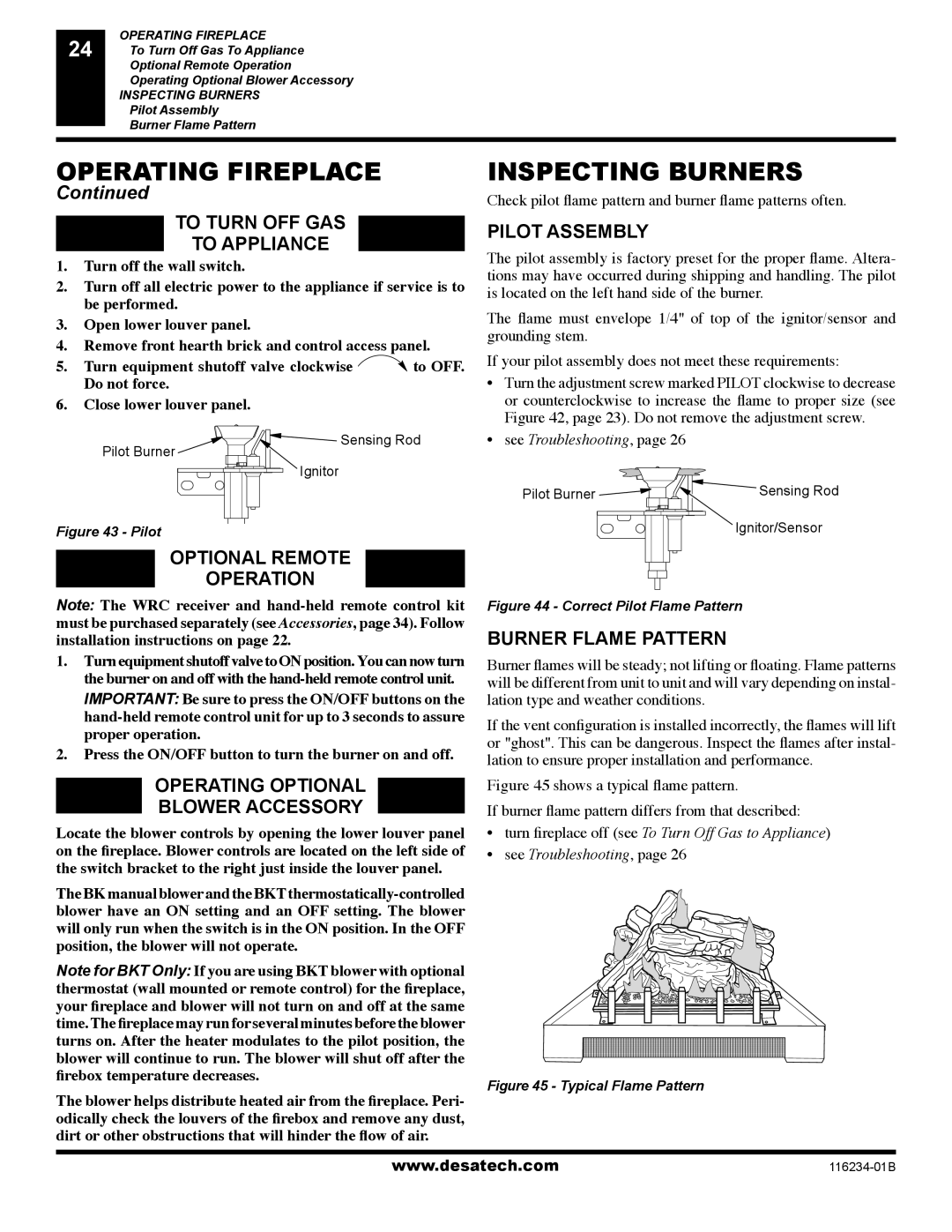(V)TC36NE, (V)TC36PE specifications
Desa (V)TC36NE and (V)TC36PE are advanced heating solutions designed to provide both efficiency and comfort in residential and commercial settings. These two models stand out for their innovative engineering, modern design, and user-friendly features, making them ideal choices for individuals seeking reliable temperature control.The central feature of both models is their high-efficiency combustion systems, which optimize fuel usage to reduce environmental impact while saving on heating costs. The (V)TC36NE and (V)TC36PE are equipped with state-of-the-art burners that ensure complete combustion, resulting in clean emissions and enhanced performance. With an exceptional energy rating, these units contribute to a greener environment by minimizing the carbon footprint.
Another notable characteristic is the versatile installation options these units offer. The (V)TC36NE, designed for natural gas use, can be seamlessly integrated into existing heating systems, while the (V)TC36PE operates with propane, catering to a broader range of installation scenarios. This flexibility enables homeowners and businesses to select the model that best fits their fuel supply and heating needs.
Both models come with advanced controls that grant users precise temperature regulation. With smart technology integration, users can operate these heating units remotely via smartphone applications, allowing for personalized heating schedules and real-time monitoring. This feature not only enhances user convenience but also promotes energy efficiency by preventing energy waste.
The design of the (V)TC36NE and (V)TC36PE models is another highlight, showcasing a sleek and contemporary aesthetic that complements various interior decors. The units are constructed with durable materials, ensuring longevity and reliability even under demanding conditions. Furthermore, their quiet operation enhances the overall comfort of the environment, making these units suitable for bedrooms, offices, and other noise-sensitive areas.
In summary, the Desa (V)TC36NE and (V)TC36PE models merge innovative technology with practical design and efficiency. With their advanced combustion systems, versatile installations, smart controls, and stylish appearance, they offer an ideal heating solution for modern living spaces. Homeowners and businesses looking to enhance their heating performance while maintaining environmental consciousness can find a compatible option in these exceptional models.

